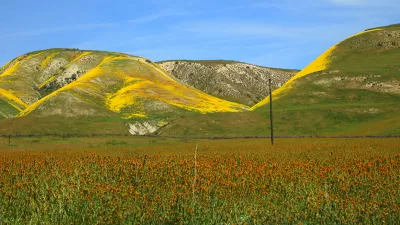Your senses (or lack thereof) aren't deceiving you. Some cities really are worse for seasonal allergies than others, and some of the reasons are entirely preventable.

Helen Lock starts this tale of seasonal allergy suffering with a particularly debilitating, even tragic, episode in Melbourne, Australia:
In 2016, Melbourne experienced a rare and extreme case of “thunderstorm asthma” that led to ten deaths and 8,500 people being admitted to hospital in one day. Ambulance dispatchers struggled to cope with 1,900 calls in the space of five hours, and one hospital ran out of Ventolin asthma inhalers. The storm had caused grass pollen to burst in the air, creating tiny particles that caused serious breathing problems when inhaled.
While allergy seasons like that have led some academics to declare the city the worst in the world for allergies, other cities have their own unique concoction of natural and human-designed factors that lead to seasonal suffering.
Meanwhile, in London, landscaping practices have led to an abundance of tree pollen, aggravating hay fever, according to a horticultural expert. Landscapers in the UK capital – and around the world – plant predominantly male trees because they are less messy than female trees, which shed seeds, fruits or pods, says Thomas Leo Ogren, creator of the Ogren Plant Allergy Scale. “The problem is that while these [male] trees and plants are litter-free, they all produce abundant allergenic pollen.”
Lock's tours Canberra, Tokyo, most of England, and the United States. Stateside, the Allergy and Asthma Foundation of America releases a report [pdf] that ranks cities by pollen counts. "In 2018, McAllen in Texas, Louisville in Kentucky and Jackson in Mississippi made the top of three of the organisation’s 'most challenging places to live with spring allergies' list," according to Lock.
FULL STORY: Which is the most hayfever-prone city – and is 'botanical sexism' to blame?

Planetizen Federal Action Tracker
A weekly monitor of how Trump’s orders and actions are impacting planners and planning in America.

Restaurant Patios Were a Pandemic Win — Why Were They so Hard to Keep?
Social distancing requirements and changes in travel patterns prompted cities to pilot new uses for street and sidewalk space. Then it got complicated.

Map: Where Senate Republicans Want to Sell Your Public Lands
For public land advocates, the Senate Republicans’ proposal to sell millions of acres of public land in the West is “the biggest fight of their careers.”

Maui's Vacation Rental Debate Turns Ugly
Verbal attacks, misinformation campaigns and fistfights plague a high-stakes debate to convert thousands of vacation rentals into long-term housing.

San Francisco Suspends Traffic Calming Amidst Record Deaths
Citing “a challenging fiscal landscape,” the city will cease the program on the heels of 42 traffic deaths, including 24 pedestrians.

California Homeless Arrests, Citations Spike After Ruling
An investigation reveals that anti-homeless actions increased up to 500% after Grants Pass v. Johnson — even in cities claiming no policy change.
Urban Design for Planners 1: Software Tools
This six-course series explores essential urban design concepts using open source software and equips planners with the tools they need to participate fully in the urban design process.
Planning for Universal Design
Learn the tools for implementing Universal Design in planning regulations.
Heyer Gruel & Associates PA
JM Goldson LLC
Custer County Colorado
City of Camden Redevelopment Agency
City of Astoria
Transportation Research & Education Center (TREC) at Portland State University
Camden Redevelopment Agency
City of Claremont
Municipality of Princeton (NJ)




























